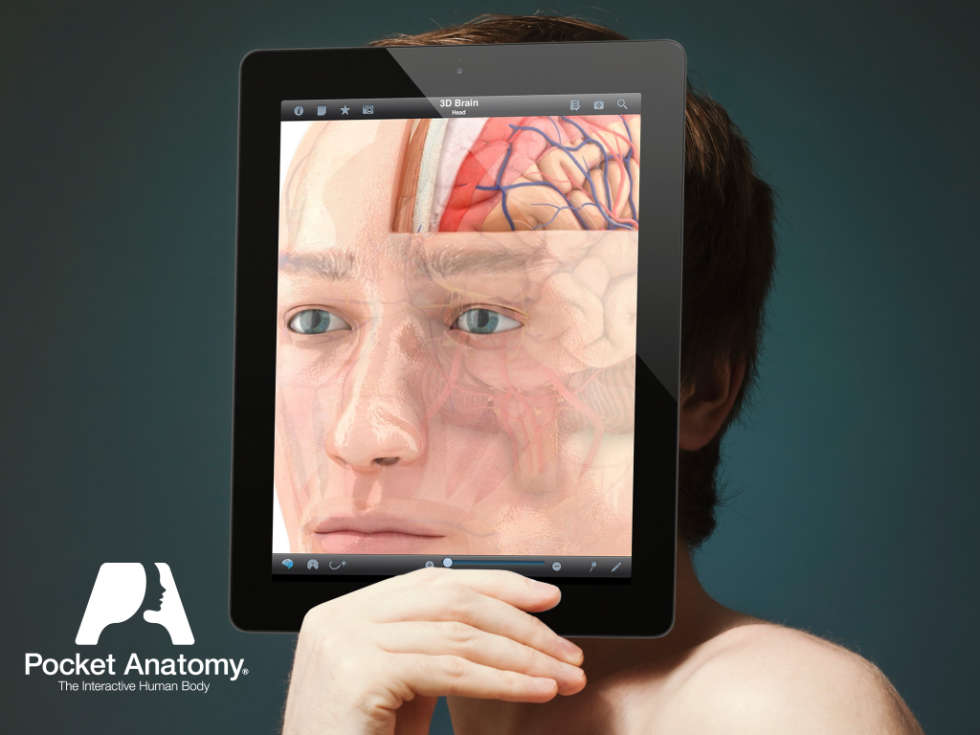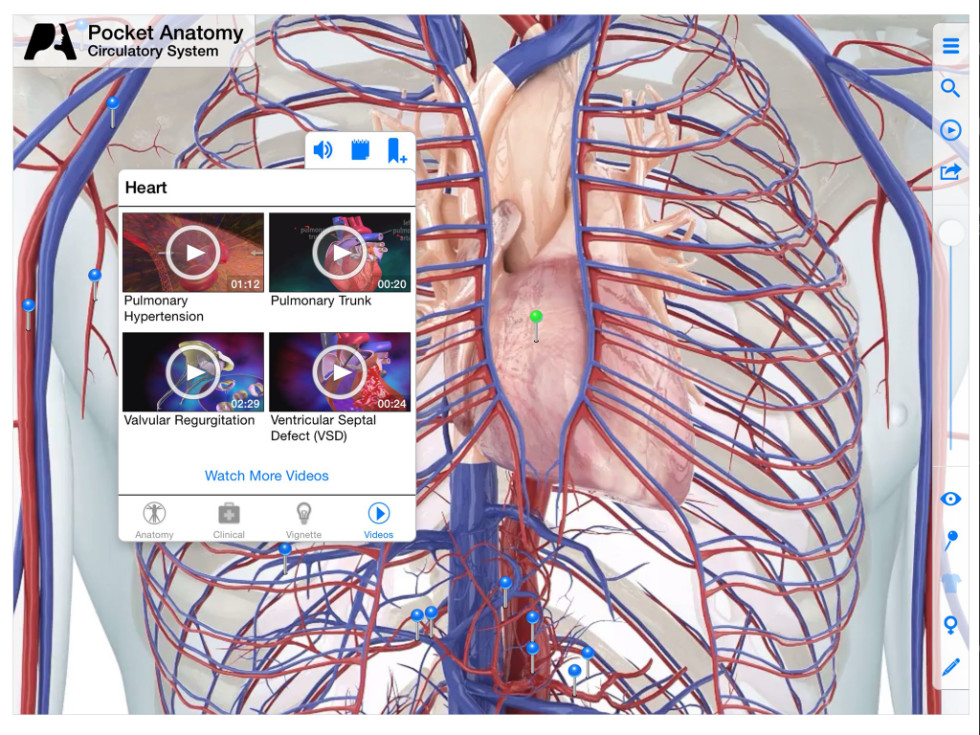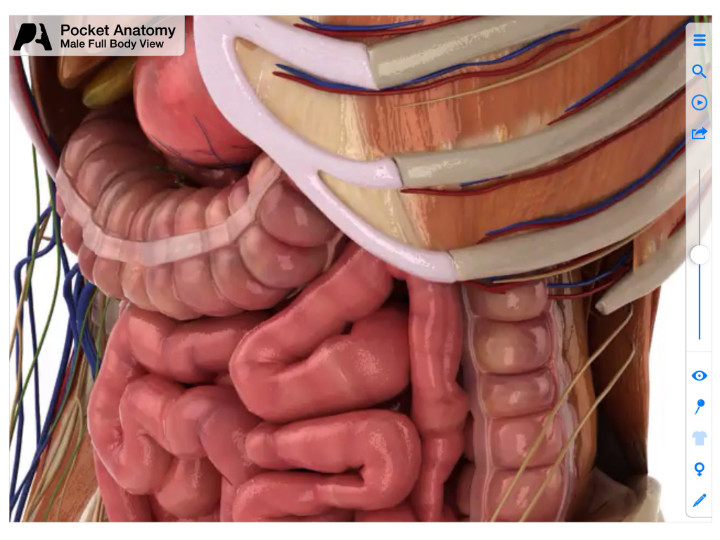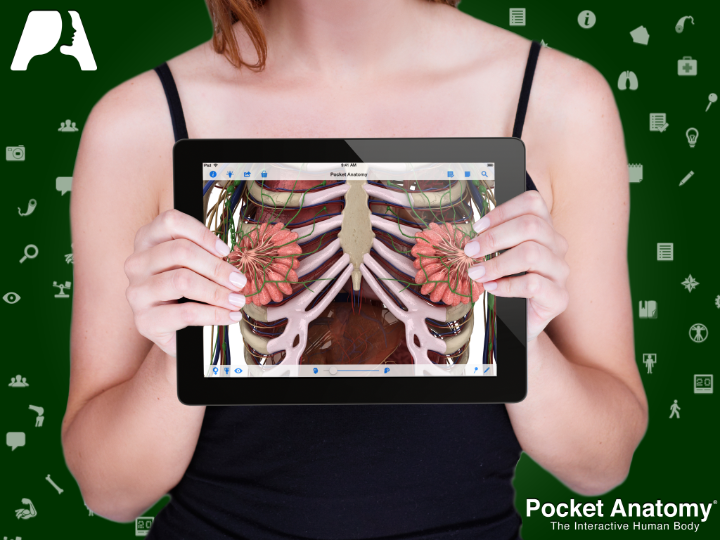Mark Campbell – Founder of Pocket Anatomy, Multimedia Designer
Mark is a multimedia designer from Galway making healthcare and health understanding more meaningful through the use of 3D graphics and animation.
More from...
Tell us about your background?
I'm from Galway. I grew up in the city in a time when the population is half what it is now, and I used to walk and cycle everywhere as a kid. Everyone did. Growing up, I played a lot of sport, but music was a big part of life too, and the busking and live music scene set the tone of the city. Galway had, and still has, a great vibe. It was a fun place to grow up in. I did both primary and secondary school through Irish in the Jes, and developed a strong love for the language. I'd wish for nothing more than for the next generation to have the same sense of freedom as we had around town.
I did the Bachelor of Commerce in UCG (now NUI Galway), with modules in IT, Marketing, Economics, and French. I majored in French and ended up spending a year of my four-year degree in France. That was a really influential year for me; in another country, speaking the language, doing my college through French, and I really liked it. That was probably the first time that I had left Galway for longer than a month or two. It strikes you sometimes when you go away; you realise what you've got at home - the place, the culture, the people, the language. It's a big part of my identity that I hold onto.
What swayed you in the IT direction?
My brother, Joey, also works in multimedia design and my eldest brother, Paul, has a fine art and sculpting background and is now a wooden boat builder, so I suppose there's a pattern of making things in our family. Software is just another vehicle for making things. I remember having web design projects in college, where we were being taught HTML, and outside of college my brother and friends were introducing me to Photoshop, After Effects and movie editing software and it just became something that was fun and exciting. There was a big sense of 'Wow- this is fun' in the early days on publishing on the internet. I remember my brother and I making websites for people back in 97/98 and just enjoying it. That was the start of it.
I finished college and worked out in Aró, a great web development agency in Furbo where I was part of a growing team as a junior web developer. I knew at that stage I wanted to work in this field. I had a lot more to learn, so I went back and did a Masters in Interactive Media in the University of Limerick. There were 14 to 18-hour days working over twelve hard months - no life - but I loved it. This is the type of industry that keeps changing; you have to keep on top of it, but if you enjoy what you're doing, you don't mind putting in the hours.
My Masters thesis and project was in 3D and immersive 3D environments. I built a virtual skydive installation with users suspended by harness in front of a back-projected home-made iMax screen where users controlled their navigation via the heat from their hands. I loved the freedom of creating the physical installation, but also the user testing, programming and 3D artwork that allowed for the project to come together.

Tell us how you got started with Pocket Anatomy
I got offered funding for a four-year PhD after doing my Masters and I remember thinking "I've got two website customers, a laptop, a back bedroom - I think I'll just set up a company and see." I remember the main motivating factor behind this was that I wanted it to be creative. I need to remind myself of this sometimes. Work for me has to be creative because there's 30 or 40 per cent of your working day that's not necessarily creative when you work in IT - whether that's project management, or planning or sales, and once the creative elements take a back seat, there's an alarm bell going off in my mind, because, for me, it means that I'm not continuing to innovate and learn.
When I came back to Galway in 2007, after working in eLearning and multimedia in New Zealand, one of our next door neighbours in the innovation centre, Paul Gilson from Veryan Medical said; 'I see you're doing these 3D animations for eLearning. What about doing something for me for my medical products? I need to show a stent being deployed in the Vena Cava. Could you make me a medical animation? I thought 'it's like a train tunnel, and the blood flow could be a particle system'. 'Sure, why not?'.
After two years, we realised that half of our customers were medical companies in London, Connecticut, New Jersey, and Galway so we eventually moved away from web design and focused on animations for medical trade shows. Rather than showing boring death-by-PowerPoint 90-slide presentations, our clients would show a 90-second slick animation of a product, that in some cases didn't even exist yet!
At the time, I remember having lower back pain and had a physio appointment where I was shown a plastic model and a 2D wall chart as a way of explaining and showing where the pain was, and I thought 'we could do better than this'.
Randomly, one morning, I woke up at 4am, I took out a sketch book beside my bed and I started sketching out a human body and showing different parts of the body from a layman's perspective. It was basically simplifying the human body to explain to a patient where and what is going on.
We knew that there was a gap in the market, and even though we thought we had a solution, we needed to understand the problem better. It took us some time to figure this out - could we do something to be of benefit to lots of people and not just medical device companies? I remember going to the biggest European cardio conference in Barcelona. I brought the iPod touch with me and I started showing our animations to cardiologists and medical educators. They were saying, 'Woah, this is really cool and useful', and a year later, smartphones came out and we've been developing for those platforms ever since. Our apps started being used by medical students for learning anatomy to pass exams. Four years on, those med students are now becoming doctors, and are liaising with patients and the patients want to understand what's going on. So in a sense, it's really morphed over the last few years. I'm really excited by it because we're now starting to see it make a real difference to patients.
Tell us about your product...
With Pocket Anatomy, we're trying to really improve what the world is like for a patient. You remember only a small proportion of what the doctor says to you and your consultations are a matter of minutes. At the very best, you come out with a roughly sketched drawing from a GP or consultant. Nothing tangible that might help you understand more.
From my experiences with doctors, I always thought that it's really odd that we're not demanding something visual here, when health is complicated. If you don't understand something, you're not going to understand what treatment plan or what exercise or what prescription you need and you'll probably be back within 30 days, and guess what? The clinic or hospital doesn't want you back in there; our system is clogged up enough as it is. So the vision I have for the future is that doctors will be using visual technology to explain conditions to patients, in hospitals and at primary care level - with GPs, chiropractors, and physiotherapists. It's just about taking their wall charts and plastic models into the 21st century and using the multimedia that people see at the cinema, see on their mobile devices, and are aware of through gaming and new technology. I think we're ready to move beyond what we're already using in those areas and for a year or more now, we're starting to see that this is possible.

What are the reactions so far?
We just finished two hospital pilots and the feedback has been phenomenal from the hospital team, but more importantly, from the patients. They were routine procedures but the patients were being shown our software alongside the explanation of the procedure and the recordings of the conversation were also being sent to the patient afterwards.
Do you see what you do as being creative?
I do. We are creative beings. We can all make things, we can all create, we can all design if we have an outlet, and I think IT, computer software and animation is an outlet for a creative desire that I have. I personally love making things, I love to create something from nothing. Whether it's whiteboarding an idea and designing a prototype, or leaving software out of it altogether and mocking something up on paper. For me, I think that's where the creativity comes in and in terms of healthcare, what I enjoy most is this mix of creativity and problem solving.
What do you see happening with Pocket Anatomy?
We're going to have a situation where you go to a doctor and you're going to come out of there with an understanding of what the doctor said, a record of what the doctor said, and somewhere in the Cloud, a file that you can access and show to others and say, 'This is what my doctors just said', like some people already do now with a visit to their dentist. I think- and we think as a team- that we're probably going to see that emerge in the next five years. The same as no longer only having paper based bank statements and going to 24/7 with online banking - with access to your records, we think healthcare is going to witness a big disruption in the next few years.
We're working very closely with patients and doctors. My background in interactive multimedia design helps me to look closely at the end-user experience, and to include them. Traditional software design models involves a client to telling you what requirements they want for a project, then you go away and build it and show it back to the client and maybe tweak it a little bit. For consumable products like what we've been doing, we brought in medical students for our early projects and co-developed the software with them. They became part of our team. It meant that when we pushed the product out to medical, nursing and physio students worldwide, they got a sense of, 'Wow, someone's built this with me in mind'. For the patient side of things, we're doing the same. We're talking directly to, and building in conversations and requirements from doctors. We look at their workflow, because I think a huge factor in healthcare is understanding a very complicated network of processes. From general practitioner to the consultant to maybe another practitioner, in another practice or another hospital, we want to fit into all of this ecosystem, so we see it as a challenge and it's trying to use a creative approach to this - trying to use technology as a creative tool to solve this challenge. That's the way we're looking at it.
The creative process is a huge driver for me personally. The monetary side of things is not the driver, and that's not really what I get a buzz out of. I feel that this is our greatest work to date because it's really a culmination of the work we've been doing over the last four years. This is what I'm most proud of because it's finally getting around to what I wanted to do four years ago: to create software with the patient in mind.


Any major influencers along the way?
The late Rory O'Connor was a huge inspiration to me. Sadly, Rory passed away in 2013. He was a great guy and a great influence. As well as a musician and founding member of the Galway2040 initiative, Rory was the former MD of Hewlett Packard in Galway and Chairman of the GMIT Governing Body. He had strong sense of inclusiveness when it came to innovation. Rory was the type of character that you'd meet for a cup of coffee and think, 'I really want to meet this guy again. He really gets what we're trying to do.' There are interesting initiatives, in other parts of the world, where they match up people who are close to retirement age and people who are starting companies. They recognise that you have all this knowledge and experience on one hand, and all this energy and enthusiasm, without all the experience, on the other. And you should stick those two components together. So Rory and myself would be an example of that. He took a really keen interest in what we were doing. He was really generous with his time and brought a great sense of wisdom and humour into our team meetings. In one of our meetings he came along with a big toblerone bar, one of those jumbo ones, gave everyone a piece and said, 'Each of the triangle points represent the key elements in software innovation - people, business and technology. You can't have a successful innovative project without those three and don't think of them in isolation - they always have to be in collaboration'.
Other people like Paul Gilson, our first customer, who has been with us through thick and thin. He's been very good with his time, a very generous individual and very supportive about what we do. They're the things that you never forget when you're starting out and even now, when we're trying to grow the company, he's still available and still makes time for us.
Being a tech company, you can operate from any part of the world, why Galway?
I love Galway. There is a major challenge in healthcare and I do think you can change a flawed system that's ripe for disruption. I think you can do that from anywhere in the world, so why not Galway? I think we're really lucky here. Galway is a vibrant city, it's a small coastal city and I love watersports, trad music, and my family are from here; so I've got a strong attachment with this part of the world. I love the energy that Galway has - I love the sense of nostalgia walking and cycling around our city, and the strong memories from different chapters of my life, be it school, college, or working in what seems like a hundred and one jobs growing up: from working in An Gabhar Órga (now 37 West) bussing tables, to putting up the big top tent in the Arts Festival, to flipping crepes in Mic and Suzanne's Yummy Crepe stall in the market. All working with wonderful craftspeople of one kind or another.
Galway's great - we need to realise that more and be proud of it, and keep adding to it. I think that will develop with the more people that try to make a go of things here - it's tricky but it's probably going to be tricky no matter where you are. The great thing about Galway is that it's a small city so the chances are that you're going to be able to tap into the things you need when starting out - other creative people, mentors, customers, and investors. In some ways, its size makes it easier to make these connections in Galway.
I do have to travel and spend time overseas, which is part and parcel of the role. Looking at healthcare, there are the same problems worldwide. Why can't we be leaders here? Do we have to look at a model somewhere else and follow it? Not when it hasn't yet been solved. I think we can learn from others, definitely, but we can also lead. We've already got world leading technologies coming from Galway in many facets - the arts, creative industries, software design, fashion, film, medical device, marine technology and R&D. We are world leaders in many ways.
Going forward, what would you like to see happening for Galway?
I like the idea of us looking to similarly sized cities and looking at best practice for problems that have been solved - looking at ideas that have worked elsewhere that we could apply to Galway. For instance, cycling can be a great way to get around. If you look at case studies like Amsterdam and different cities in the Netherlands and Denmark, and within a matter of a few years, they managed to turn things around. There was a huge focus on car-centred policies from national and local government levels; and they changed. Locally, collectives like the Galway Cycling Campaign are making important contributions to these ideas. Making Galway an enjoyable city to navigate by bike or on foot- I think that's something that Galway needs to realise.
I think giving back is a big part of it too. I've benefited an awful lot from people's time and I'm a huge fan of 'pay it forward'. There are a lot of start-up companies in Galway. Giving time back to these people, whether it's meeting them for a coffee or getting involved in a mentoring capacity, is something I'd like to see more of. Our generation, in the 80s and 90's gained a huge amount from the efforts of others. I remember, going back to the Jes days, most of our teachers spent time after school giving extra tuition or sports coaching. The clock didn't just stop at 4pm. There was a great sense of going above and beyond what they needed to do. I think we're good at doing it in Ireland; it's important to remember it, and to get involved ourselves.
- Joe Boske - Previous
- Next - Tracy Bruen